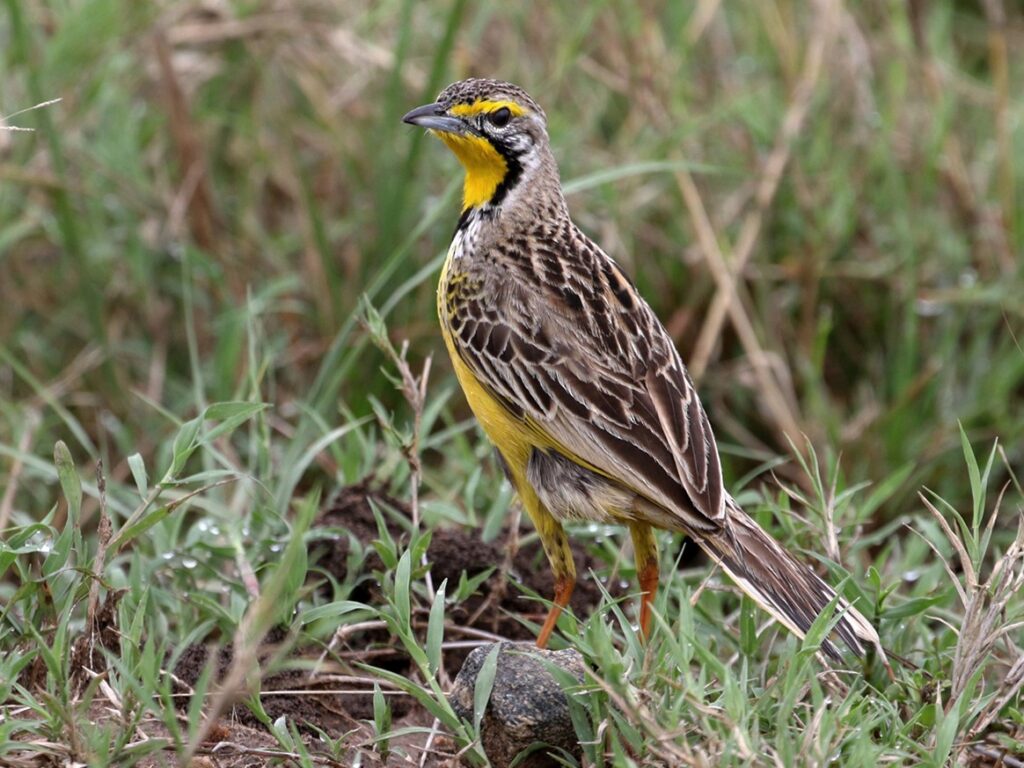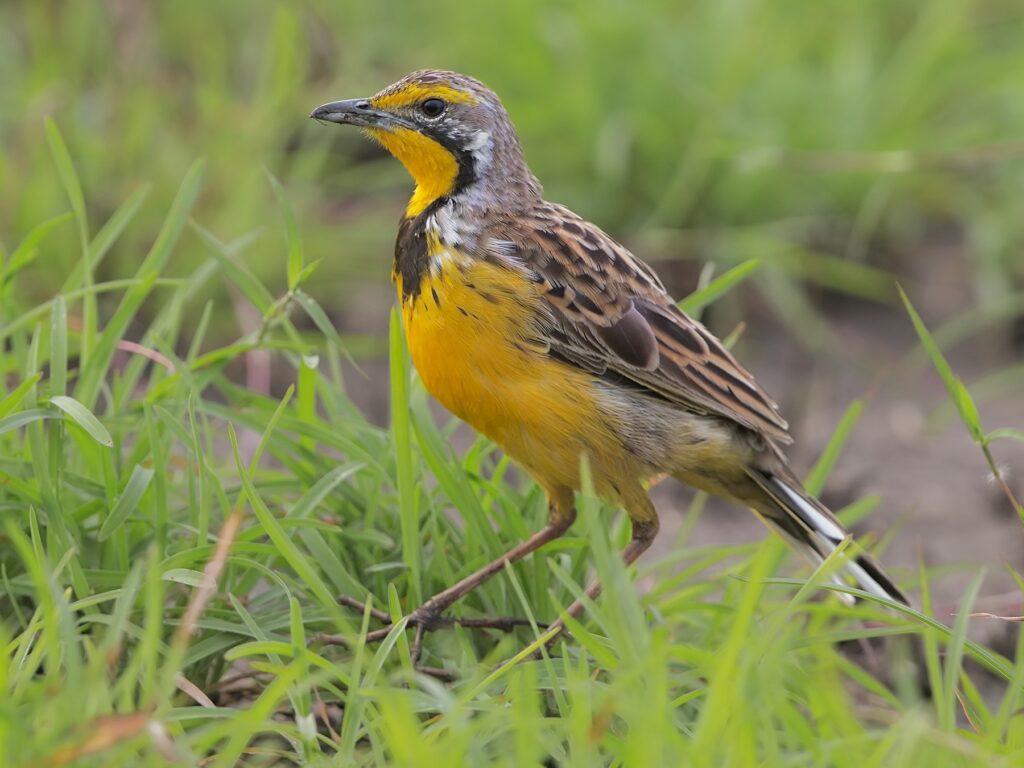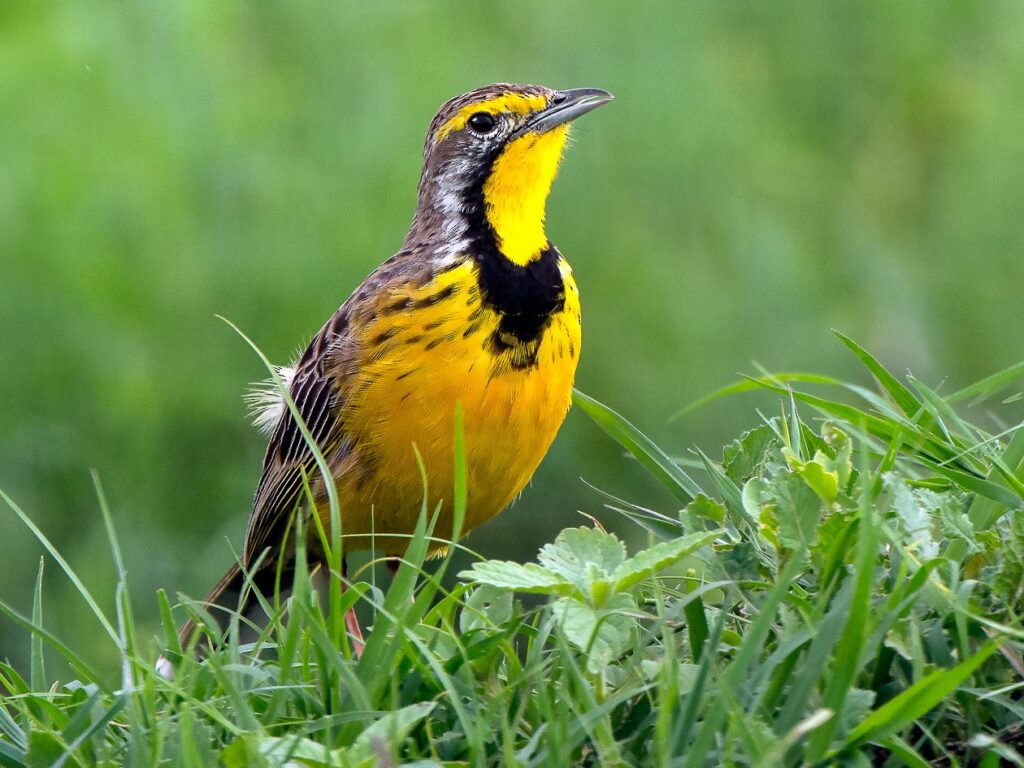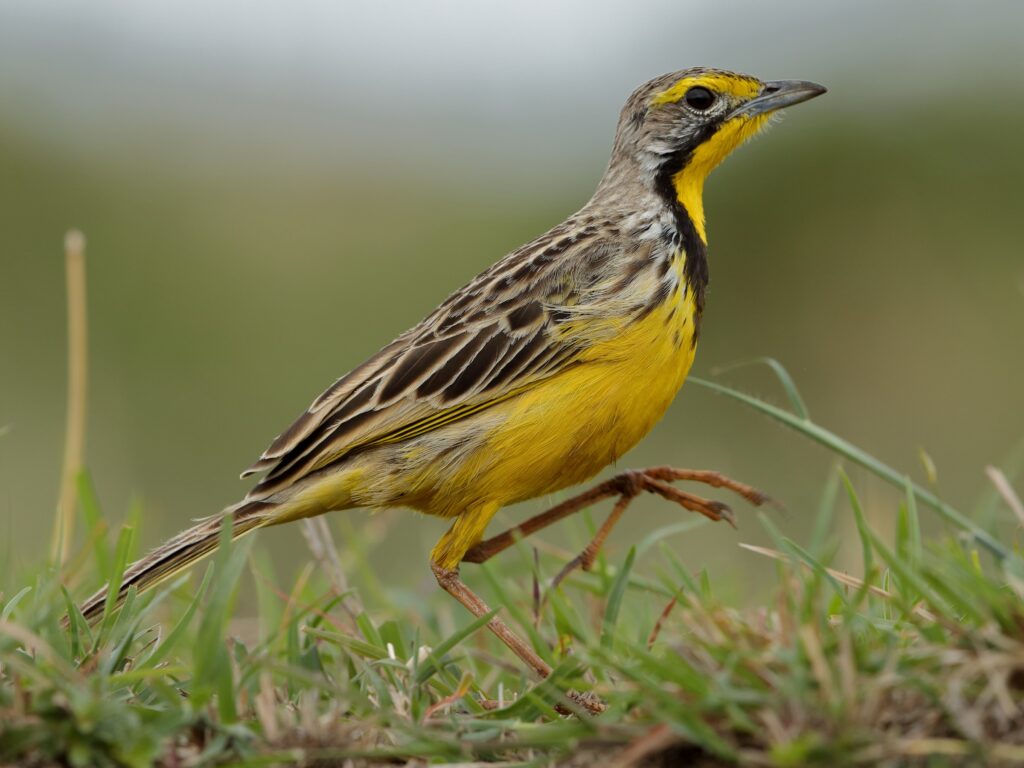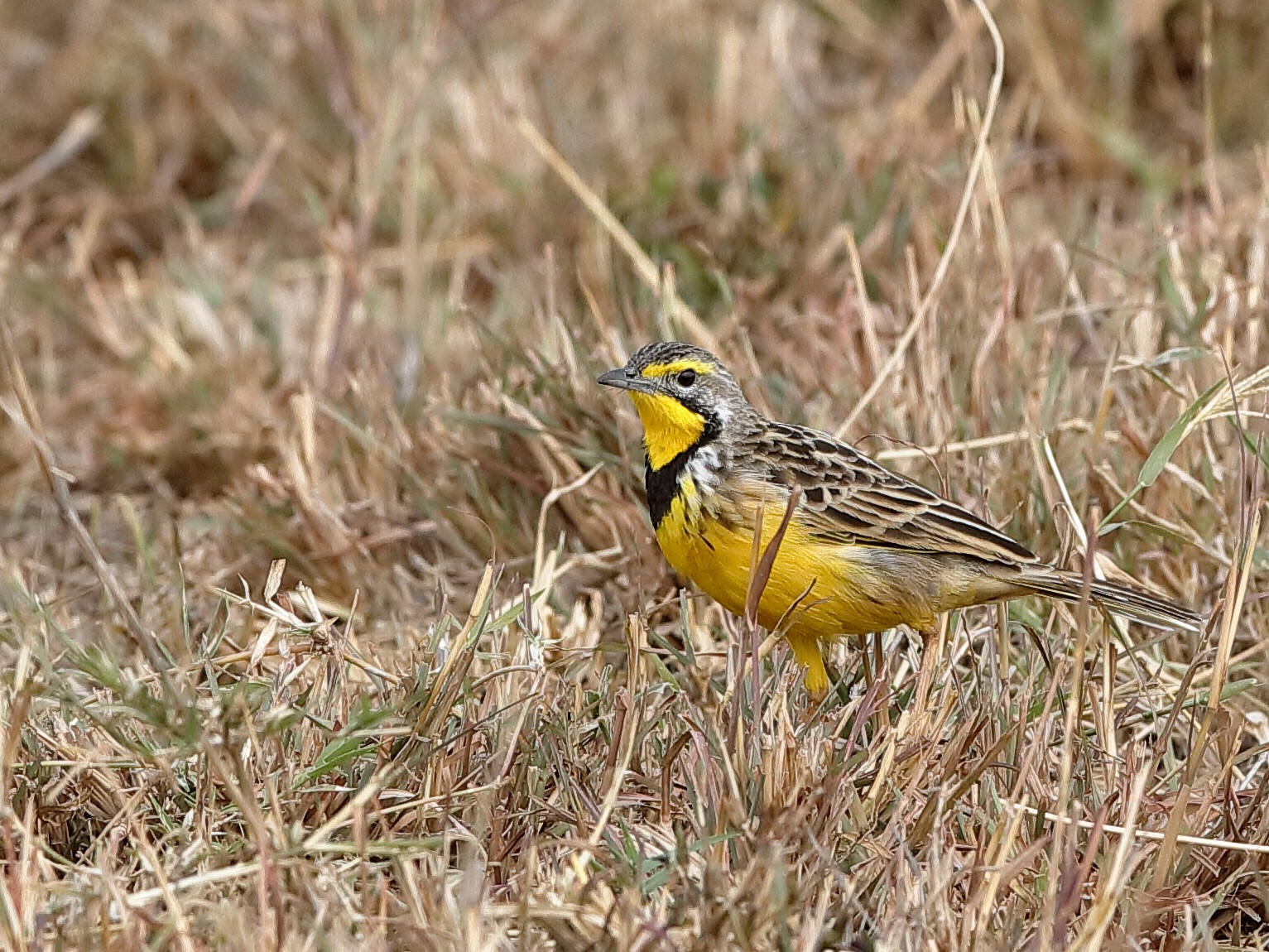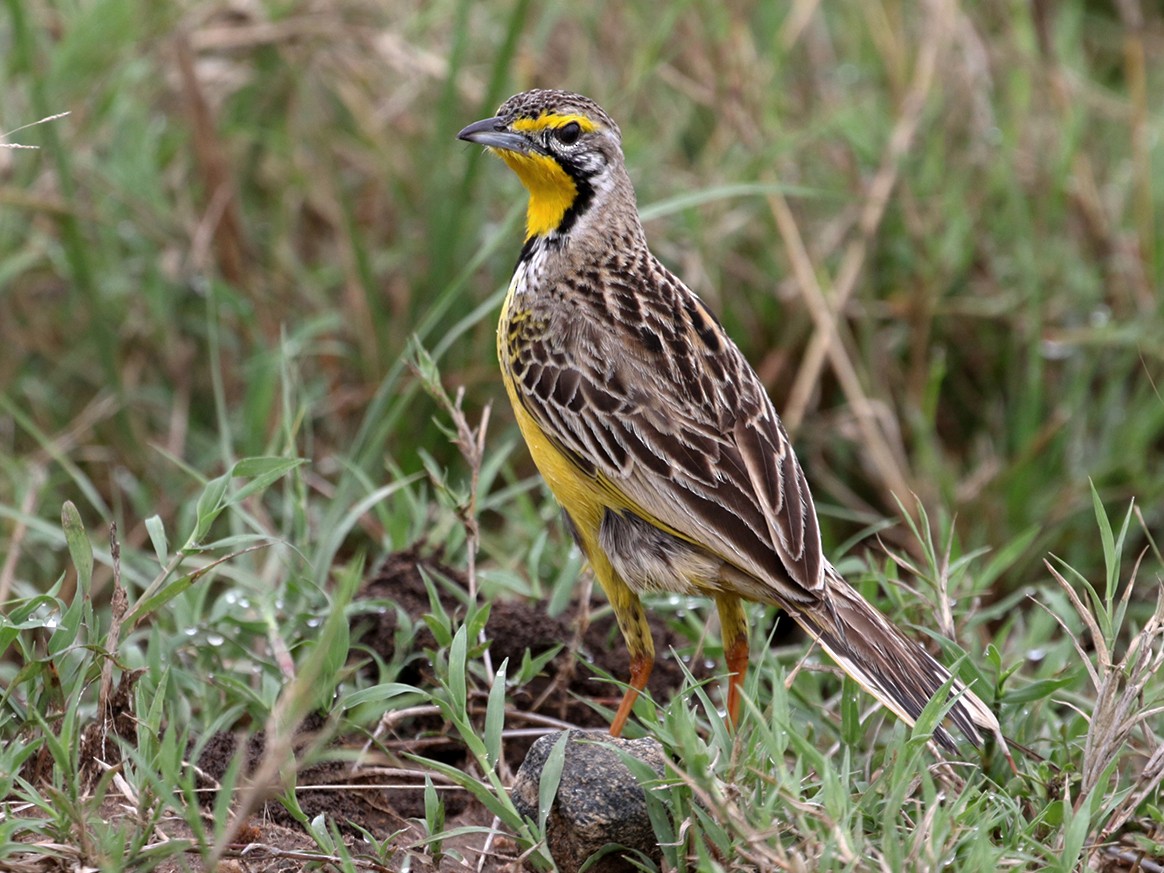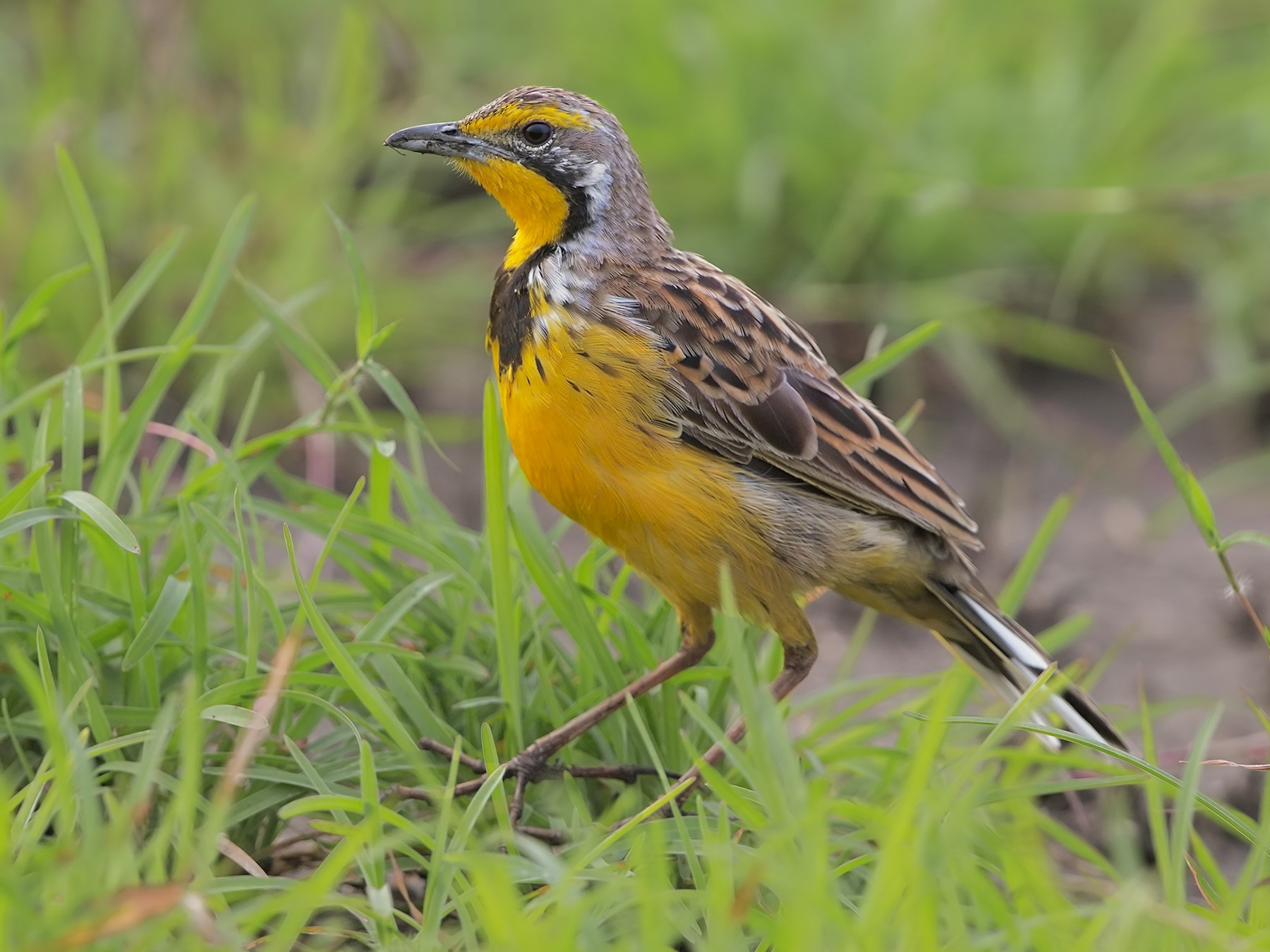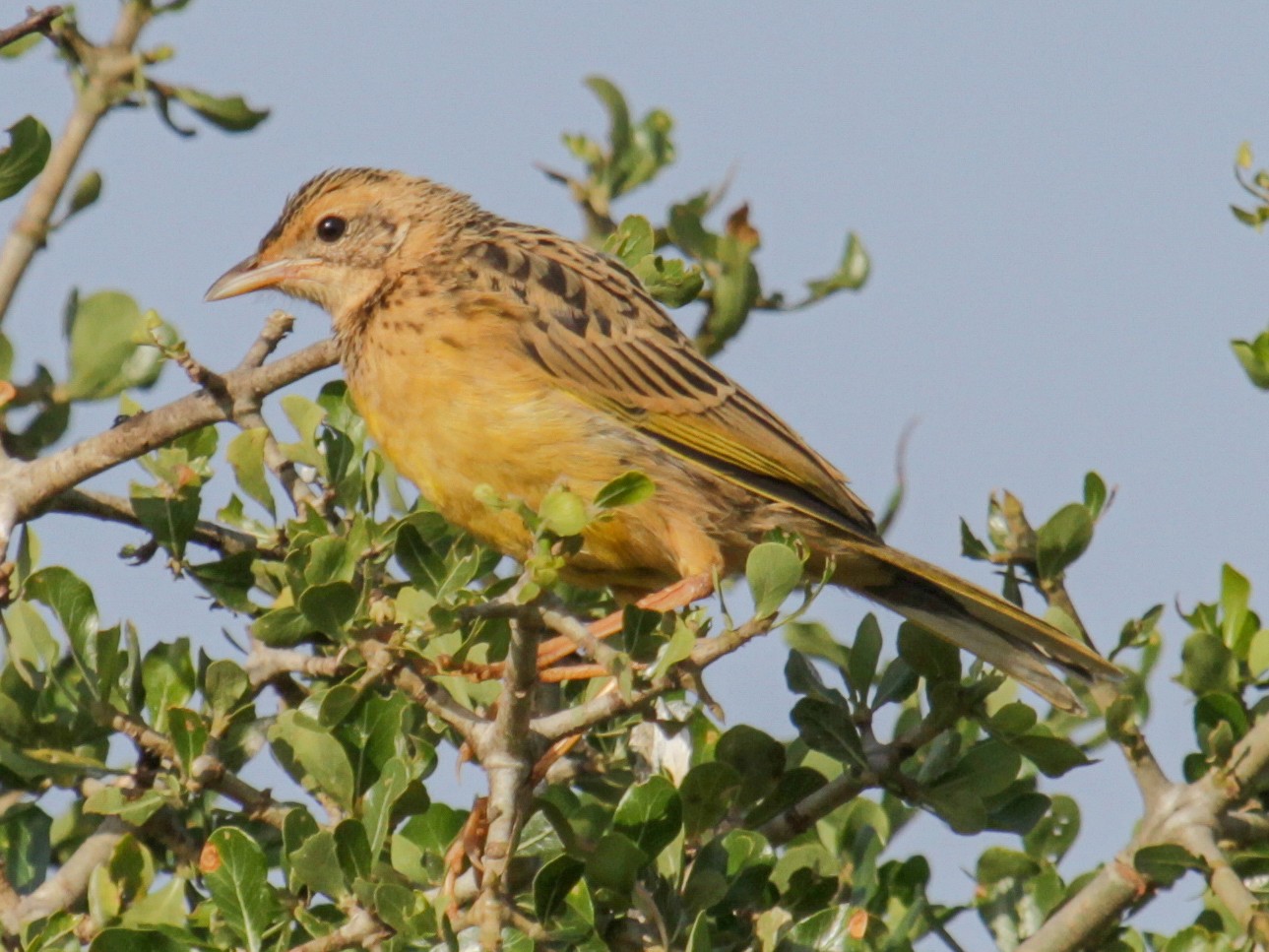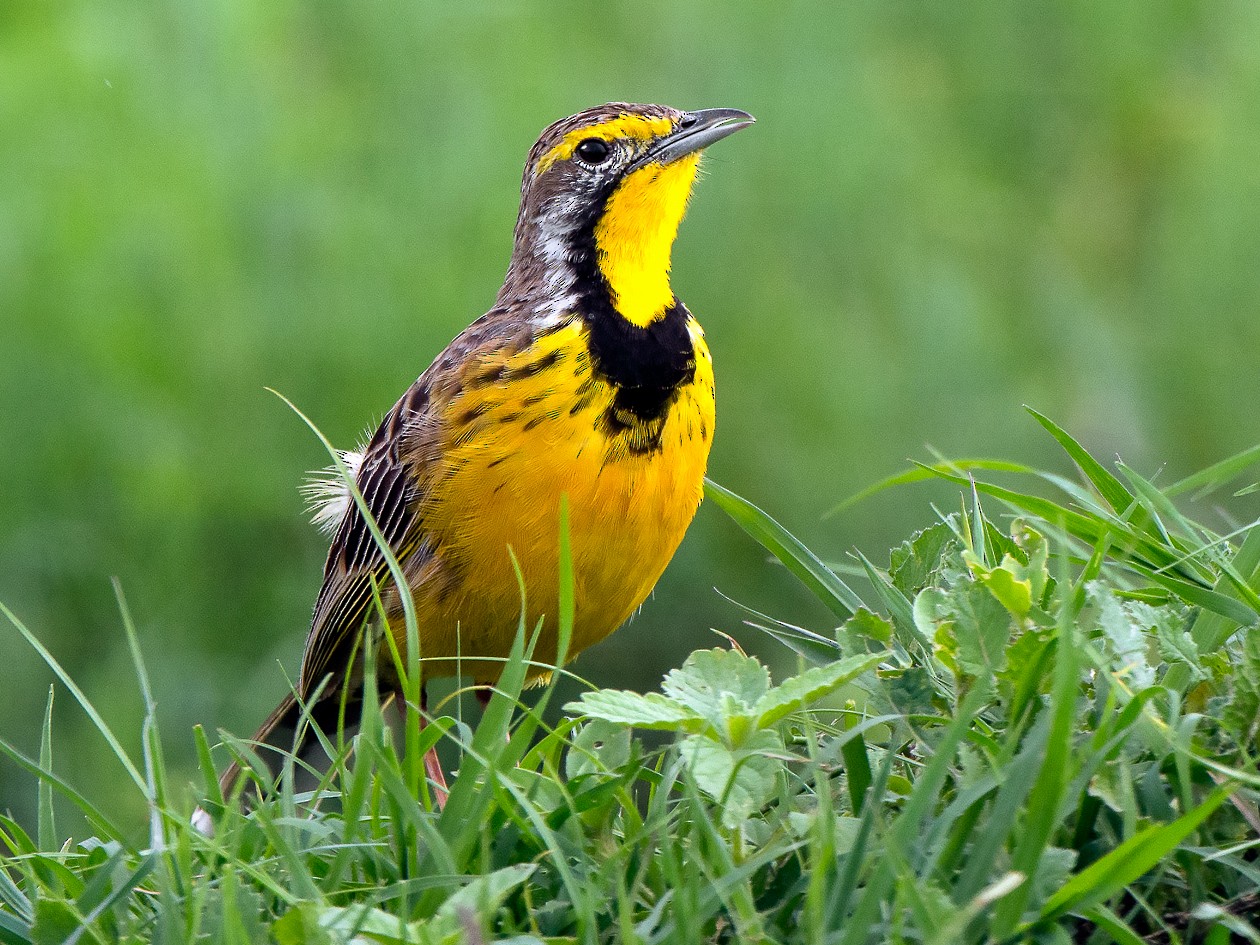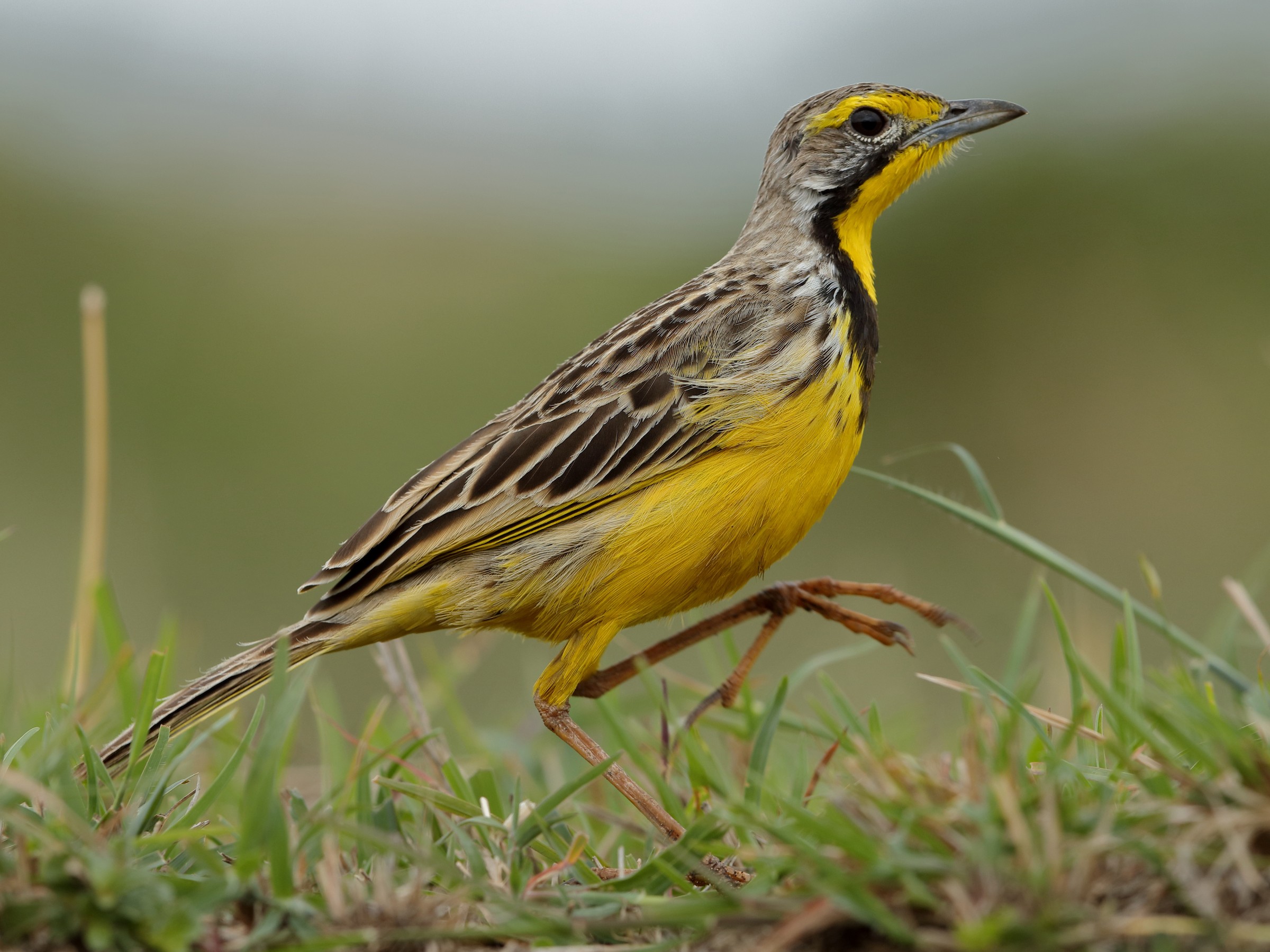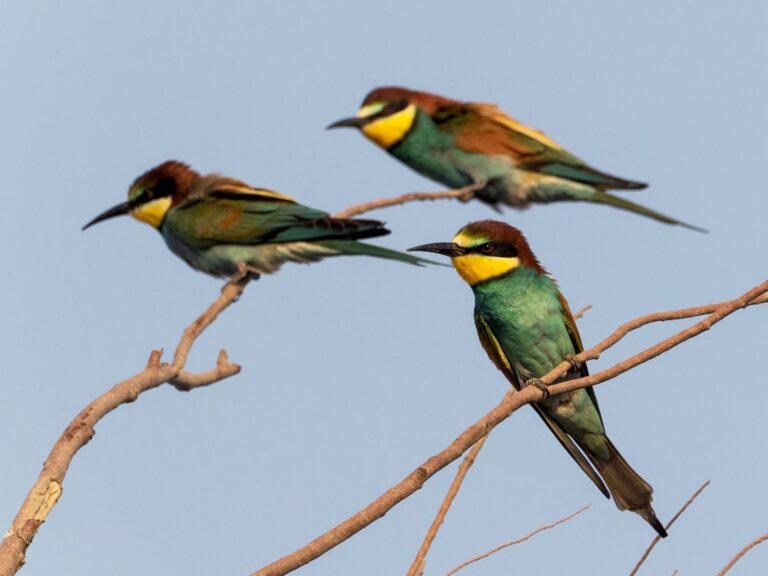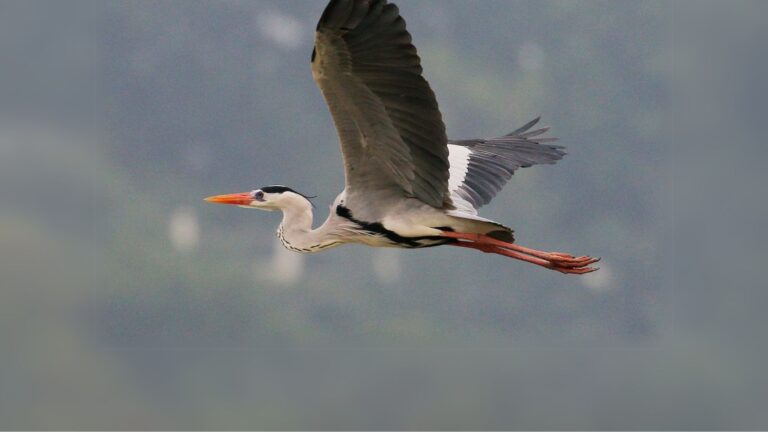Yellow-Throated Longclaw Discover the Striking Grassland Songbird
The yellow-throated longclaw stands out in the grasslands with its bold yellow chest and that sharp black throat band. It’s closely related to other longclaws and wagtails across Africa.
Scientific Name and Authority
You’ll see the scientific name Macronyx croceus in bird guides. Louis Pierre Vieillot, a French ornithologist, described it back in 1821. “Croceus” nods to the bird’s deep yellow color. The yellow-throated longclaw belongs to the genus Macronyx, which gathers a handful of similar African birds.
There’s some interesting variation—different regional races show up in South Africa, with changes in size, color, and habitat. That keeps biologists on their toes when studying these populations.
Here’s a quick look:
| Scientific Name | Described By | Year Described |
|---|---|---|
| Macronyx croceus | Vieillot | 1821 |
Relation to Motacillidae Family
The yellow-throated longclaw is part of the Motacillidae family. That’s the same group that includes pipits and wagtails—birds with similar builds and habits. They’re mostly ground-dwelling insect hunters, sticking to open spaces. Genetic research, like this multi-locus phylogeny, shows longclaws form their own branch within Motacillidae.
The yellow-throated longclaw is closest to other African longclaws, not so much to wagtails or pipits. Motacillidae birds tend to have long legs, long tails, and strong feet—perfect for moving through tall grasses.
Common and Local Names
Depending on where you are, you might hear different names for this bird. The English name highlights its yellow throat, while scientists stick to Macronyx croceus. In French, it’s sentinelle à gorge jaune. German speakers say Gelbkehlpieper.
Some field guides just call it “Longclaw.” In local African languages, you’ll find even more names reflecting its wide range.
A few common names:
- Yellow-throated longclaw (English)
- Macronyx croceus (Scientific)
- Sentinelle à gorge jaune (French)
- Gelbkehlpieper (German)
Physical Characteristics and Identification
You can spot a Yellow-Throated Longclaw pretty quickly if you know what to look for. That yellow throat and bold markings make it hard to miss. It looks a bit like other longclaws or even meadowlarks, but a few details help you tell them apart.
Distinctive Markings
The bird’s most eye-catching feature? That bright golden-yellow throat. Just below, a solid black triangular band jumps out against the yellow chest. Most of the underparts stay yellow, so the color pattern is pretty hard to confuse. The back is streaked brown and olive, which helps it hide in the grass.
A light line above the eye (the supercilium) gives the face a sharp look. The tail features white outer feathers, which you’ll notice when it flies, and the legs show a pinkish tone.
Size and Structure
It’s a medium-sized bird, measuring around 19–21 cm. The body is slim, with a long tail and legs that are longer than most songbirds.Those long legs make it easy to walk through tall grass. The bill is short and pointed, good for catching insects.
Wings are rounded, and the bird stands upright and alert—either on the ground or perched low. Males and females look a lot alike, though males might flash a brighter yellow throat during breeding.
Here’s a quick reference:
| Feature | Description |
|---|---|
| Length | 19–21 cm |
| Throat | Bright yellow |
| Breast Band | Bold black, triangle-shaped |
| Legs | Long, pinkish |
| Tail | Long with white outer feathers |
Comparison with Similar Species
People sometimes mix up the Yellow-Throated Longclaw with the Cape Longclaw or pipits. Unlike pipits, it’s got that bright yellow belly and a crisp black band on the chest.Cape Longclaws show an orange throat patch, not yellow. The longclaw’s look and behavior are oddly similar to American meadowlarks.
For instance, the African Yellow-Throated Longclaw and the Eastern Meadowlark in the US look almost like twins—a neat case of convergent evolution. Still, the Yellow-Throated Longclaw is only found in Africa, and its call and favorite habitats set it apart. If you want to dig into the tricky parts of telling these birds apart, check out this multi-locus phylogeny study.
Distribution and Habitat
The Yellow-Throated Longclaw turns up in many parts of sub-Saharan Africa. It sticks to grasslands and savannas, where open country and seasonal rains shape its world.
Geographic Range Across Africa
This bird covers a lot of ground, stretching from Senegal and Gambia in West Africa all the way to Ethiopia, Kenya, and Tanzania in the east.
It also pops up in Central Africa—think Cameroon, Chad, Gabon, Congo, Central African Republic, and South Sudan. Down south, you’ll find it in Angola, Zambia, Zimbabwe, Malawi, Mozambique, and parts of northern South Africa.
It’s present in Burundi, Rwanda, and Uganda too. Maps show it prefers open grassland or lightly wooded savanna. Populations seem stable in most places, and the bird shows up in many countries, as you’ll see in range studies.
Countries where you might spot it:
- West Africa: Senegal, Gambia, Mali
- Central Africa: Cameroon, Chad, Central African Republic, Gabon, Congo, South Sudan
- East Africa: Kenya, Tanzania, Uganda, Rwanda, Burundi, Somalia, Ethiopia
- Southern Africa: Angola, Zambia, Zimbabwe, Malawi, Mozambique, parts of South Africa
Preferred Habitats
Yellow-Throated Longclaws stick to open habitats—savannas, seasonally wet or flooded grasslands, and dry savannas. You’ll usually see them in tall grass with scattered shrubs or trees, which helps them stay hidden while hunting.
They avoid dense forests and cities. Instead, they like grasslands along riverbanks, wet meadows, and even marsh edges. In sandy regions, you might find them in fields and pastures, especially after rains bring new grass. They range from lowlands to high plateaus, as long as there’s enough grass.
Habitat highlights:
- Savanna grasslands
- Wet meadows and marshy spots
- Dry grasslands and open fields
- Grassy riverbanks and seasonal wetlands
Adaptation to Environmental Conditions
Yellow-Throated Longclaws handle tropical and subtropical African climates well. They thrive where wet and dry seasons shape the land, following lush grasses and insects that pop up after rains.
Their strong legs and feet let them walk through thick grass while foraging. The plumage blends into the grass, hiding them from predators. When drought hits or habitats change, these birds move locally to find better feeding spots. That flexibility helps them stick around even as conditions shift.
Want to know more about how African grassland birds adapt? Check out this research on distribution and conservation of endemic bird species in Ethiopia.
Behavior and Ecology
The Yellow-Throated Longclaw, with its bright yellow throat, is a familiar face in African grasslands. Its daily routine—feeding, nesting, singing—fits right into these open spaces.
Feeding Habits
Yellow-Throated Longclaws mainly eat insects and other tiny critters. They walk or run on the ground, picking bugs from soil, grass, or low plants. Their menu includes grasshoppers, beetles, caterpillars, and spiders. During the rainy season, insects become more abundant, so food is easier to find.
Sometimes, they’ll eat seeds or even a small snail, but insects are always the top pick. They rely on sharp eyesight to spot movement in the grass. Their feeding style is pretty similar to the meadowlark, thanks to convergent evolution.
Breeding and Nesting
Breeding kicks off in the wet season, when tall grass offers good cover. The female builds a cup-shaped nest on or near the ground, tucked away in grass tufts. She uses dry grass, leaves, and sometimes softer plant fibers to make the nest. She lays 2 to 4 eggs, usually pale with dark spots.
She handles incubation herself. After the chicks hatch, both parents feed them. The chicks grow quickly and leave the nest in about two weeks. The male keeps watch, often singing from a tall grass stem or bush.
His call is loud and clear, so you’ll know when you’ve wandered into a longclaw’s territory. For more on these grassland bird communities, see this study on the Serengeti.
Conservation Status and Threats
The Yellow-Throated Longclaw (Macronyx croceus) lives across sub-Saharan Africa. It’s not considered globally threatened right now, but human changes to the landscape are starting to cause problems.
Population Trends
Across most of its range, the Yellow-Throated Longclaw population seems stable. It’s still widespread and doesn’t appear on the IUCN Red List as endangered or vulnerable. In some regions, especially where grasslands shrink from farming or development, numbers may dip. Local studies hint at slow declines where human activity ramps up. Long-term data is patchy, so it’s tough to say exactly what’s happening everywhere.
Major Threats
Habitat loss stands out as the biggest threat to the Yellow-Throated Longclaw. People have been turning natural grasslands into farms, cities, and timber plantations, squeezing out the places this bird calls home.
This issue pops up in both highlands and lowlands. Destruction of wetland edges and tall grass—key spots for nesting and feeding—has chipped away at populations in some areas.
Studies of African pipits and longclaws highlight habitat loss as the top concern for these birds. Pesticide use also plays a part, since chemicals on crops can poison the food chain and wipe out the insects longclaws eat.
Conservation Efforts
Conservation work focuses on saving the last grassland and wetland patches. Some protected areas still offer safe ground for the Yellow-Throated Longclaw.
Efforts include:
- Stopping farms from spreading into vital habitats
- Encouraging landowners to use land in smarter, more sustainable ways
- Teaching local communities why grassland birds matter
Habitat conservation really is crucial here. Reports keep calling for stronger action, especially in places where the species faces even more pressure. Curious about the details? Check out info on distribution and conservation of endemic birds in Ethiopia.
Frequently Asked Questions
The Yellow-throated Longclaw lives in sub-Saharan Africa’s grasslands. It’s known for its bright yellow throat and a song that’s hard to forget. It might look a bit like some other birds, but a closer look reveals some pretty clear differences.
What distinguishes the Yellow-throated Longclaw from the Eastern Meadowlark?
The Yellow-throated Longclaw sports a vivid yellow throat with a black band and a mostly grayish back. The Eastern Meadowlark, which lives in the Americas, has a chunkier body and different markings.
They act and perch in similar ways, but they live on separate continents and aren’t close relatives.
What are the primary habitats of the Yellow-throated Longclaw?
You’ll find this bird in wet grasslands, floodplains, and open savannas across sub-Saharan Africa. It likes to perch on tall grasses or low shrubs, watching the world go by.
Dense forests and bone-dry areas don’t appeal to it. It sticks to grassy places with lots of cover. If you want to dig deeper, there’s more on this in studies of Serengeti grasslands.
Can you describe the vocalizations of the Yellow-throated Longclaw?
The song sounds sweet and flute-like. Usually, it sings from a high perch, letting out a string of whistles and trills. It uses both song and call to mark territory and attract a mate in breeding season.
Which birds are commonly mistaken for the Yellow-throated Longclaw?
Some folks confuse it with other longclaws, like the Rosy-throated Longclaw or the Abyssinian Longclaw, since they’re similar in size and color. Pipits get mixed up with them too, but they don’t have that bold yellow throat.
You can usually tell them apart by throat color, where they live, and their preferred habitats. There’s a deeper dive into this in research on longclaw species.
How does the Rosy-throated Longclaw differ from the Yellow-throated Longclaw?
It comes down to throat color, really. The Rosy-throated Longclaw has a pinkish or rosy throat, while the Yellow-throated Longclaw’s is bright yellow.
They also tend to show up in different regions and like slightly different habitats. Their size and shape are close, which can make things tricky where their ranges overlap.
What are the key differences between the Yellow-throated Longclaw and the Abyssinian Longclaw?
The Abyssinian Longclaw lives in Ethiopia. It sports a yellow throat and a black band, just like the Yellow-throated Longclaw.
But its range is more limited, and its back pattern looks a bit different. You won’t find these two species in the same places, so if you know where you are, figuring out which bird you’re seeing is much easier.
Curious about more birds from Ethiopia? Check out this catalogue for Ethiopian birds.


